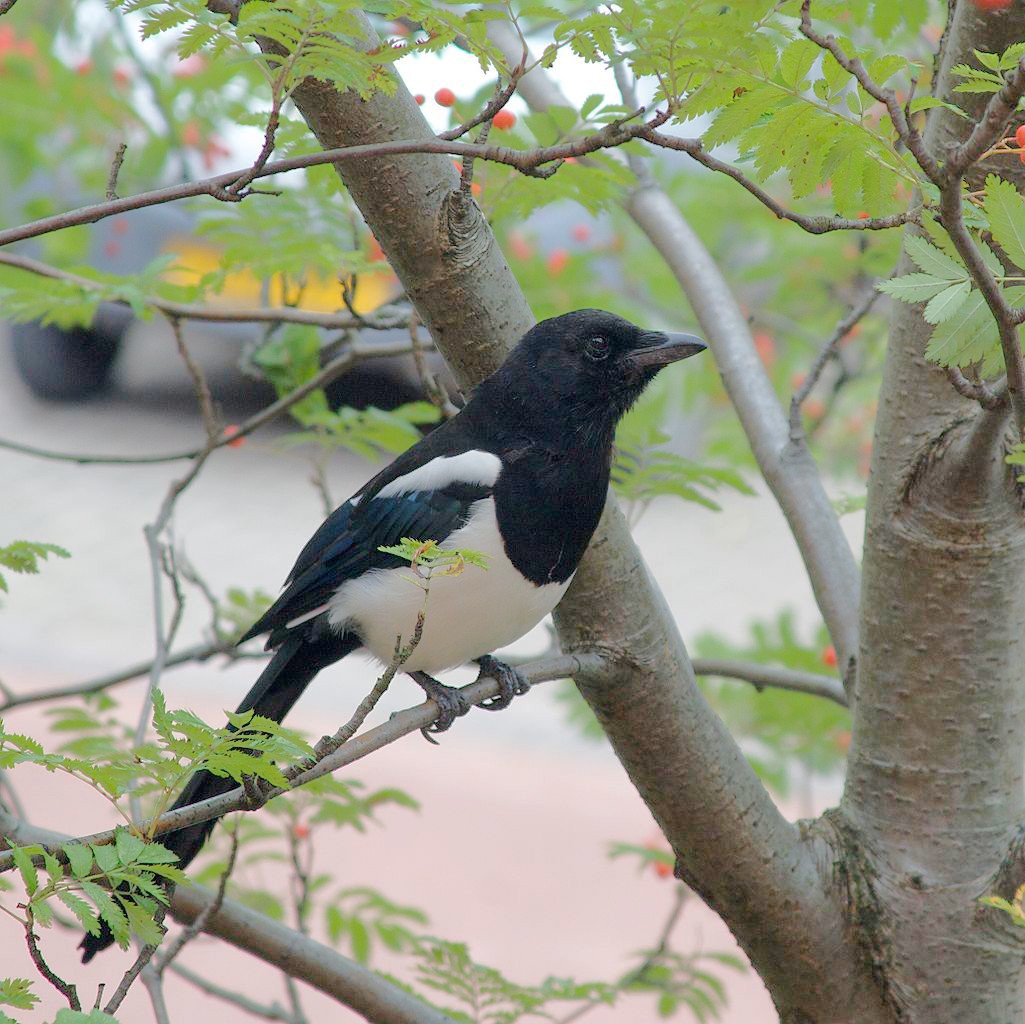
- Pete Birkinshaw, Wikimedia Commons
- The European magpie (Pica pica), one of the smartest of animals, recognizes itself in a mirror.
The "mirror test" was invented about 40 years ago as a means to determine whether or not a creature possesses self-awareness. The test is simplicity itself: A chimpanzee, say, is kept in a cage, which has a mirror. While the animal is asleep, a researcher daubs a spot of color on its forehead and then watches what happens when the chimp wakes up and sees its reflection in the mirror. If it tries to wipe the color off, the animal obviously recognizes itself, and must therefore be self-aware.
Animals that generally, but not always, pass the mirror test include the great apes: bonobos, chimpanzees, orangutans and gorillas; bottlenose dolphins and orcas; elephants; and European magpies. Human babies begin to pass the test at around 18 months or 2 years. Such supposedly smart creatures as dogs and cats routinely fail the test, however.
Recently, the sublime obviousness of the mirror test -- what could be simpler, a creature either does or doesn't exhibit self-awareness by touching its spot? -- has come in for criticism, and researchers are now questioning previous findings. Turns out, the issue of self-awareness is more subtle and nuanced than was previously thought.
For instance, while most kids in Western societies point to their spot or try to erase it by the time they're 2 years old, young children in such countries as Fiji and Kenya routinely fail to do so. When researcher Tanya Broesch from Emory University administered the test to 82 Kenyan children up to age 6, only two passed, while the majority stood in front of the mirror looking uncomfortable. Broesch attributes their "frozen" behavior not to a lack of self-awareness (she maintains they're plenty aware) but rather to their unfamiliarity with mirrors (in the U.S., for instance, kids are surrounded by mirrors from babyhood!) and perhaps to their awkwardness at having spots on their faces. In other words, the mirror test (like many other Western tests, such as the IQ test) is culturally biased.
Meanwhile, researchers applied color to the foreheads of three elephants at a sanctuary in Thailand, and watched what happened when they looked in a mirror. These are highly self-aware animals, as shown by such behavior as displays of altruism and empathy. However, only one of the elephants in the study kept touching its mark, while the other two ignored theirs. Perhaps elephants don't care as much about strange marks on their bodies. After all, they're not "groomers" like primates, and are more used to putting mud and dirt on their bodies, rather than removing the odd spot.
Even dogs' apparent lack of self-awareness, as shown by the mirror test, is now being questioned. Dogs are not particularly visual creatures, relying much more on their sense of smell. Maybe their reaction to the test -- simply ignoring marks on their foreheads -- says more about our human bias towards the sense of sight. Also, not all gorillas pass the test, but the ones who fail may simply be uncomfortable with giving themselves eye contact in front of a mirror, since prolonged eye contact in their hierarchical society can lead to conflict.
Perhaps we're posing the wrong question. Rather than ask, "Is this creature self-aware?" we should be asking, "How self-aware is it?" The concept of self-awareness is a human notion that can't be directly measured. Maybe the mirror test tells us more about ourselves and our desire for simple answers to hard questions, instead of offering any hard and fast rules about the natural world.
Barry Evans ([email protected]) can readily empathize with the discomfort of fellow creatures while looking in a mirror.
Comments (2)
Showing 1-2 of 2